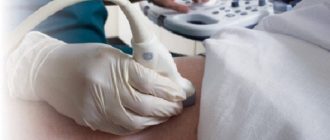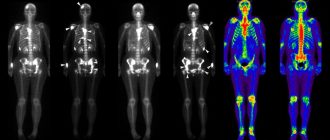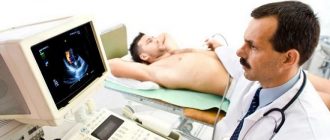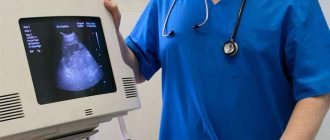Analysis of prostate secretions is the main diagnostic procedure for suspected acute or chronic inflammatory processes, congestion or cancer. Submitting material for analysis requires simple preliminary preparation, and the procedure itself is safe. The resulting material is examined in the laboratory for various indicators, which help to make an accurate diagnosis and prescribe treatment.
- Why is prostatic secretion needed?
- Indications
- Contraindications
- Types of analysis
- PCR
- Bacterial culture
- Microscopic examination
- Submission of material for analysis
- Preparing for analysis
- Collection procedure
- Decoding the results
- Physical parameters
- Leukocytes
- Amyloid bodies
- Betcher crystals
- Macrophages
- Lecithin grains
- Epithelial cells
- Flora
- Fungi
- Norm and deviations
Why is prostatic secretion needed?
Prostate secretion is one of the components of sperm, making up about 1/3 of its volume and necessary for fertilization. The secretion of the prostate gland consists of 95% water, and also includes potassium, sodium and calcium salts, phosphates, citrates and bicarbonates, as well as various protein enzymes. In addition to inorganic particles, cellular formations can be found in it, including leukocytes and non-cellular ones - lipoids, lecithin grains and amyloid bodies. The secretion of the prostate gland looks like a stretchy liquid, almost transparent with a slight tint of white.
Changes in its composition suggest various pathological processes in the organ, including inflammatory, oncological and infectious. Therefore, if such diseases are suspected, as well as infertility, it should be examined.
Indications
Analysis of prostate secretion is indicated if the patient has symptoms such as:
- painful sensations when urinating;
- frequent urination in small portions, with a feeling of incomplete emptying of the bladder;
- pain in the groin or perineum;
- discharge from the genital organ;
- decreased potency;
- pain after sexual intercourse;
- suspicion of infertility.
Contraindications
Analysis of prostate juice is a fairly simple and safe examination, which may be contraindicated in the following cases:
- damage to the anus or hemorrhoids (makes the procedure extremely painful).
- increased (38° C and above) body temperature, which leads to a change in the composition of the secretion.
- Acute inflammatory processes will interfere with the ability to make an accurate diagnosis.
- Prostate tuberculosis.
Under these conditions, instrumental examinations, sperm culture and urogenital smear (scraping from the urinary tract) are carried out.
Types of analysis
There are several ways to study prostate juice:
- Polymerase chain reaction (PCR) method.
- Bacterial seeding (bacterial seeding or simply seeding).
- Microscopic examination.
Each of them requires the same material and preparation process before taking it, so quite often the collected secret is examined in several ways at once.
PCR
A relatively new and highly accurate diagnostic method. It consists in adding a special enzyme to the resulting material, which allows multiple copies of existing DNA and RNA chains in the environment. Thanks to this, within a few hours (depending on the technique, enzymes and apparatus used, it can take from 1 to 7 hours) the presence or absence of pathogens can be determined with high accuracy.
Bacterial culture
To examine prostate secretion for the presence of bacteria, it is placed in an environment that promotes the rapid proliferation of microflora, and the rate of their reproduction is observed. This allows us to judge their quantity in the prostate juice. At the second stage of culture, the resulting microflora is studied for sensitivity to antibiotics. Some pathogens of infectious prostatitis are resistant to the most commonly used drugs, so the main goal of this analysis is to find effective treatment agents.
Microscopic examination
During this procedure, the doctor examines the resulting material under a microscope. Many indicators are studied - physical and chemical parameters, quantitative indicators of leukocytes, amyloid bodies, lecithin grains, macrophages, epithelial cells, the presence of pathogenic bacteria and fungi. The data obtained can be compared with normal values. Identified differences can indicate pathology or refer the patient for additional examination (CT, MRI, TRUS).
Submission of material for analysis
In the process of passing the analysis, two stages can be distinguished - preparation and the collection process itself. The preparatory process is common for any type of diagnosis.
Preparing for analysis
Preparing for the donation of prostate secretions is quite simple and does not require much effort:
- Stop taking antibiotics for 10-14 days.
- It is recommended to abstain from sexual intercourse for 2-3 days. This is necessary for the accumulation of secretions in the prostate.
- You must stop visiting the bathhouse or sauna 2 days in advance.
- Avoid exposure to hypothermia.
- Avoid physical activity for 1-2 days.
- Refrain from drinking alcohol.
- Stop eating 6-8 hours before.
- Immediately before handing over the material, you need to empty your bladder. This is necessary so that urine does not mix with prostate secretions.
- Also, before collecting the material, a cleansing enema is performed.
- In some cases, patients are given mild sedatives.
Collection procedure
Obtaining material for analysis proceeds as follows:
- The patient removes clothing from the lower body.
- The doctor asks the patient to lie on his right side, bend his legs slightly, and keep his hands near his chest. In this position, the fence is easier.
- To extract the secretion, the doctor, wearing gloves, inserts the index finger into the rectum 3-4 cm, near which the gland is located and massages the prostate (10-15 massaging movements).
- Next, the doctor presses on a special area, after which a secretion is produced and exits through the urethra.
- The prostate secretion is collected in a test tube and sent to the laboratory. Sometimes it is not released in sufficient quantities, in such cases the patient is asked to urinate. Part of the secretion will be contained in the urine.
It will not be possible to take prostate juice without a massage; if there are contraindications or the procedure is impossible for other reasons, other examinations will be carried out, but the accuracy of the diagnosis will deteriorate.
Decoding the results
The time it takes to decipher the analysis depends on the research methods. The longest time required for bacterial sowing is from 5 to 7 days. If microscopic examination and PCR are performed, the results can be available the very next day.
In the process of deciphering the results, many factors are analyzed:
- Physical parameters.
- Cellular and non-cellular formations.
- Pathogenic microflora.
Physical parameters
First of all, the amount of liquid released, its color, smell, thickness and acidity (pH) are analyzed. A change in these parameters indicates that the functioning of the organ is impaired. Blood or mucus may also be found in the secretion.
Leukocytes
These cells are responsible for the body's immune system. Normally, they are absent from the prostatic secretion or their quantity is insignificant. When their number is increased, inflammation of the gland is diagnosed.
Amyloid bodies
They are clots of secretion, so their detection may indicate congestion, inflammatory or oncological phenomena in the organ.
Betcher crystals
They are formed when the liquid dries out and crystallizes, so they should normally be absent. Their presence indicates oligozoospermia, azoospermia or inflammatory processes.
Macrophages
These are specific cells in the body that digest bacteria, debris from dead cells, and other toxic or unnecessary particles. A single amount of them can be considered normal; an excess indicates an inflammatory process.
Lecithin grains
It is one of the main components of prostatic material. In a normal state, they are contained in large quantities, but their decrease indicates a violation of their production by the gland, and, consequently, pathology.
Epithelial cells
These cells form the prostate duct, and when collecting material for analysis by massaging the gland, a small amount of them may enter the secretion, but an increased amount will indicate inflammation. If the number of leukocytes is also increased, this is a sign of cancer.
Flora
Microflora are various microorganisms that can live in the organ even in a healthy man. This includes some types of cocci, rods, etc. However, a large number may indicate an infection. More accurately, the state and influence of the microflora is analyzed during bacterial sowing.
Fungi
They can also be found in a healthy organ. During normal immune function, they do not cause any symptoms or pathologies, but if they worsen, they can cause complications, including inflammation.
Norm and deviations
The results obtained are compared with a table of norms and deviations, after which treatment or additional diagnostics are prescribed.
Table of norms and deviations of prostate secretion indicators:
| Index | Norm | Deviations |
| Secret volume | 0.5-2 ml | If the amount is small, prostatitis is diagnosed; if the amount is large, congestion occurs. |
| Color | Cloudy white | Pure white or yellow color indicates inflammation, red indicates blood impurities |
| Smell | The smell of sperm | Any differences |
| Density, g cubic. cm |
1,022 | Any changes |
| Acidity of the environment (pH) | 7,0 +- 0,3 | A value above 7.3 indicates chronic inflammation, below 6.7 - prostatitis |
| Red blood cells | Absence or insignificant amount | Their presence |
| Epithelial cells | No more than 2 in the visible area | From 3 and above |
| Leukocytes | 0 to 10 in field of view at 280x, 0-5 at 400x | Any values exceeding |
| Macrophages | Up to 3 | Sharply above 3 |
| Giant cells | Absence | Presence indicates congestion or chronic inflammation |
| Amyloid bodies | Absence | Availability |
| Lecithin grains | 10 million in 1 ml | Less quantity |
| Sperm | Absence | Availability |
| Crystallization pattern | Persists (fern syndrome) | The drawing is broken |
| Fungi | Absence or insignificant amount | Presence in large numbers |
| Bacteria | Absence or insignificant amount | Bacteria of staphylococci, Klebsiella, Pseudomonas or Escherichia coli in large quantities |



